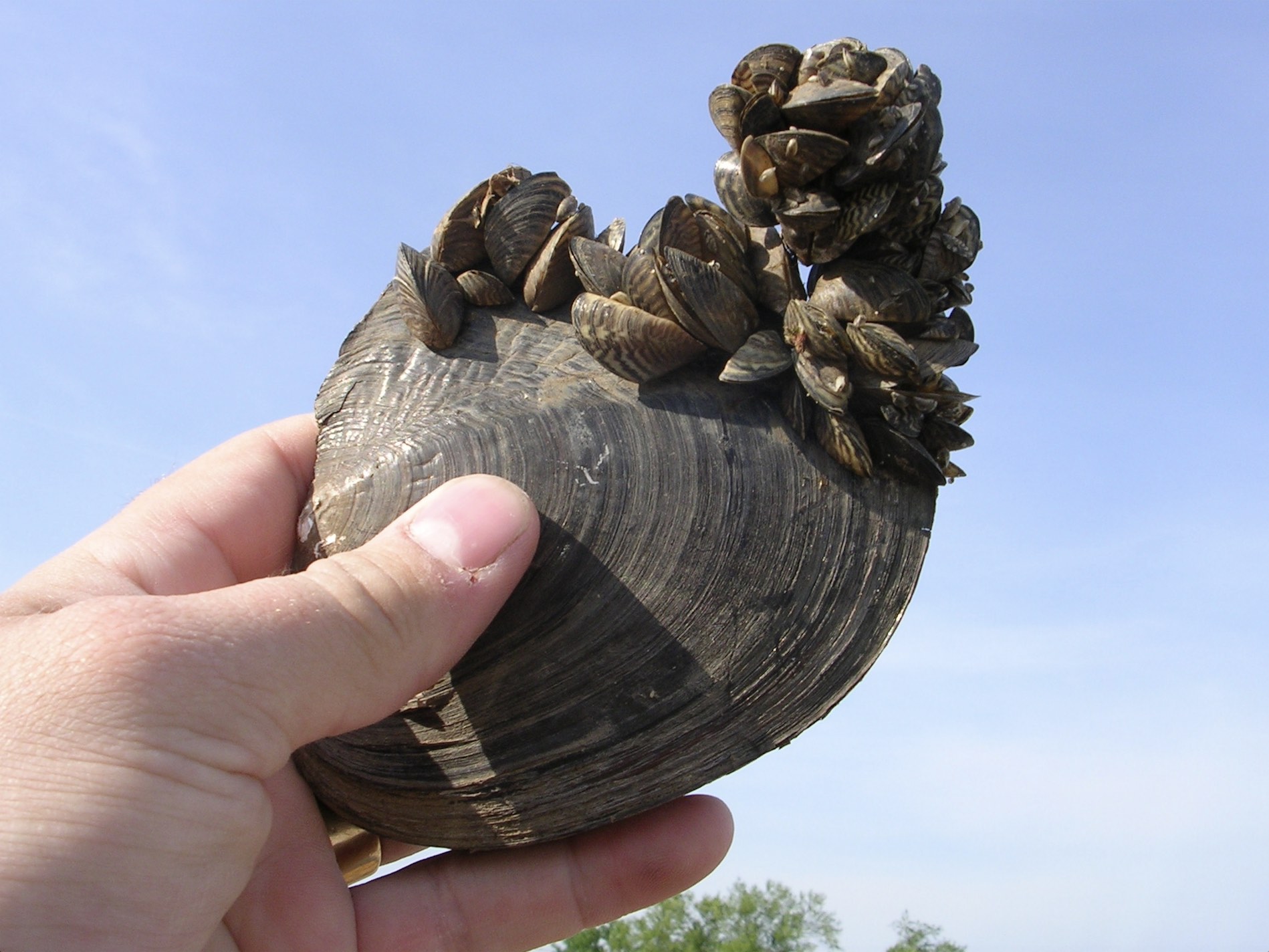Clean, drain, dry to stop aquatic invaders
By Stephanie Lynn EBS CONTRIBUTOR
Tiny, translucent zebra and quagga mussel larvae discovered in Tiber and Canyon Ferry reservoirs and a fish kill caused by parasites on the Yellowstone River spurred statewide action to prevent the spread of aquatic invaders in Montana three years ago.
Aquatic invasive species are organisms and parasites that multiply quickly to overtake or harm native species when introduced to a new environment. They can damage ecosystems, economies and even human health.
Motivated by these events and a declaration of emergency by Gov. Steve Bullock in 2016, Montana Fish, Wildlife and Parks, Montana Department of Natural Resources and Conservation and partner organizations expanded their efforts to contain foreign invaders, focused on public education and outreach, watercraft inspection stations, early detection and monitoring, and rapid response planning.
Early identification and prevention are the most cost-effective methods to stop foreign species from infecting water bodies. Once established, aquatic invaders are expensive and nearly impossible to eliminate.
One study by Nanette Nelson, an economist with the Flathead Lake Biological Station and University of Montana, estimated that if zebra and quagga mussels colonize all water bodies across Montana with maximum potential, they could cost the state a conservative $384.8 to $731.4 million in mitigation, lost revenue and property values. The report focused on direct impacts, concluding that stakeholders in tourism, hydropower and irrigation would suffer the greatest losses.
Invaders carried by river users threaten the shores of the Gallatin. The same parasite that caused massive fish die-offs on the Yellowstone River was identified in the Gallatin River in 2017.
Watercrafts, both motorized and non-motorized, are the main vector responsible for carrying invasive plants, snails, clams, mussels, crayfish, fish or pathogens from one body of water to another according to FWP. Foreign organisms proliferate by attaching to hulls, motors or trailers; hitchhiking in ballast water, bilges, pumps, live wells, bait buckets and other water-containing devices; and clinging to fishing gear, waders, nets and downriggers.
Recreationists can halt the spread of alien organisms by stopping at all watercraft inspection stations and properly decontaminating their boats, trailers and gear. FWP and partner organizations maintain 35 stations statewide where they inspected over 100,000 watercraft and intercepted 16 boats entering Montana with zebra and quagga mussels in 2018.
Boaters, paddlers and anglers can do their part to keep the Gallatin, and other water bodies in Montana, healthy by following three easy steps to disinfect their gear:
- Clean: Remove all water and vegetation from gear and clean with water and a stiff brush. Chemicals are not needed.
- Drain: Drain any water from equipment, including bait buckets, at the access point. Use a sponge for items that cannot be drained.
- Dry: Dry your equipment thoroughly. The longer you keep your waders and other equipment outside and in the hot sun between trips, the better.
These simple actions are critical to protect Montana’s economy, fisheries and way of life. To date, efforts to contain the spread of invasive species in Montana have been effective. A 2018 survey of over 1,450 sites on 250 bodies of water detected no mussel larvae or adults in Montana.
Together, we can stop the spread of alien species. Clean, drain, dry for a healthy Gallatin River.
Stephanie Lynn is the education and communications coordinator for the Gallatin River Task Force. Reporting for this piece was contributed by Montana Fish, Wildlife and Parks and the Gallatin Invasive Species Alliance.













